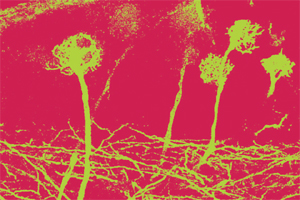Senses enable our body to relate and interact with everything around it, and, they are necessary to survive because they help us avoid danger.
Stimuli is picked-up by taste, smell, hearing, sight and touch. Respectively, their corresponding organs are the tongue (mostly), nose, ears, eyes and skin. These structures process information and send it to specific areas of the brain.
In this issue, we will get to know two senses: taste and smell. Both are stimulated by tiny taste and smell chemical particles.
Taste is an ability us humans have and it springs into action when substances come into contact with our tongue. The tongue is the main organ of the sense of taste and it is found within the mouth. It has the ability to perceive different tastes, textures and temperatures.Our sense of smell allows us to smell and identify different aromas. It springs into action when odor molecules are released from wherever they are and reach the nose, where they are processed.
The senses of taste and smell carry out an important function. To a large extent, they have the ability to recognize which foods are good for the body.
Decomposed or putrefied food emits chemical substances that both of these senses can detect. In addition, we can identify -be it through something we inherit or learn- food that is in poor state. For this reason, decomposing substances have to be disposed of and not consumed, thus preventing a disruption in the regular functioning of the body.
Picking-up on tastes and smells
The tongue, main organ of the sense of taste, has receptors on its surface that pick-up sweet, salty, bitter and tart flavors. The mucosa of the lips also has receptors that are sensitive to tart flavors and the vellum or soft palate is sensitive to all flavors.
The air we breathe in through our nose reaches a secondary current and passes on to the sensory epithelium, which also receives molecules that are given-off by food that is inside our mouth. The identification of an odor takes place when the odor molecules reach our nasal mucosa, where they dissolve and come into contact with the cilia of the odor-sensitive neurons.








 Muere Evita
Muere Evita